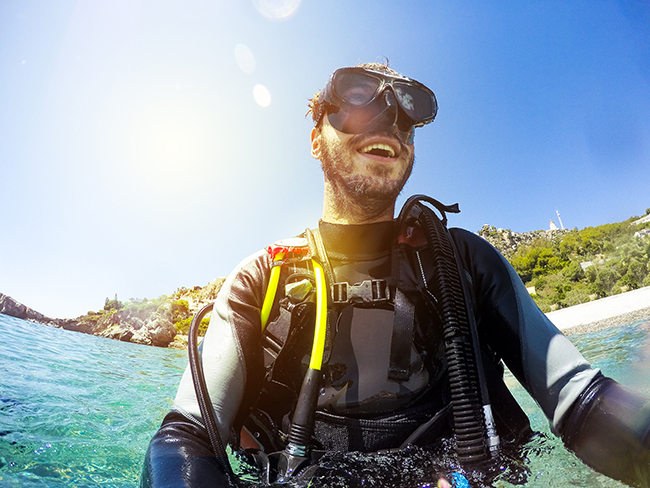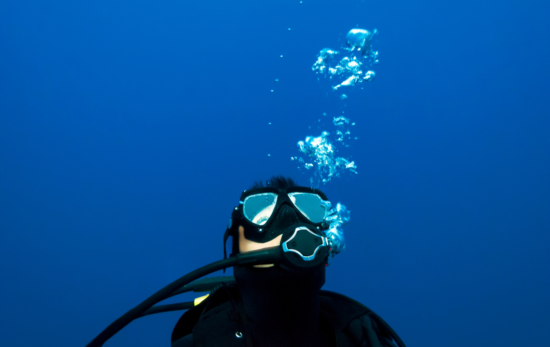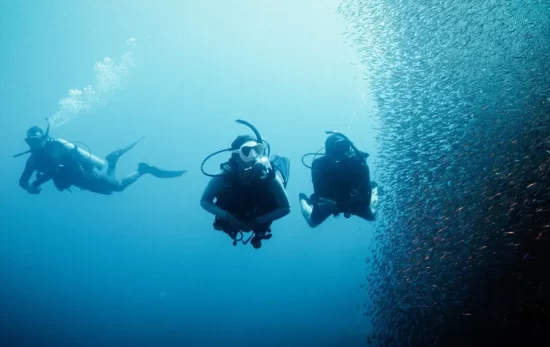
The band Semisonic said it in the early 90s, “You don’t have to go home, but you can’t stay here.”
You’ve entered the water so, here are some different methods scuba divers can use when exiting the water.
Shore Diving Exit
Walking out is an obvious choice if you’re shore diving. Divers can use the natural incline of the bottom as a guide. Swim as far as you can, stand up when the water is about waist deep. Remove your fins and walk out.
Shore Diving in Heavy Surf
If you’re in heavy surf, swim as far as you can and crawl out on hands and knees. Crawling will help your stability in the waves. Remember to keep your mask on and regulator in until you’re all the way out.
Dive Sites with Steps
Some dive sites have steps. Once you get there, remove your fins and simply walk up the steps and out of the water. This is an easy exit if the seas are calm, however, in rough waters this exit can be tricky.
Larger Boat Exit
Climbing out of the water using a ladder is a common exit technique for boat and platform dives. Certain ladders will require that you remove your fins first, and some “Christmas tree ladders” don’t require fin removal.
Smaller Boat Exit
Ladders used by small inflatable boats aren’t usually able to hold you and your gear. In this scenario, it’s best to remove your gear at the surface while you climb into the boat. Remember to remove your weight belt first, inflate your BCD, so it floats and keep ahold of your gear, so it doesn’t float away.
Gear removal at the surface is a good technique anytime for divers who don’t have the strength to carry gear on the surface.
Night Diving Exits
If you’re doing any of the various exits listed above at night, remember to place a light at your exit point. A surface beacon will help you find your exit point when needed (To learn more tips on night diving check this out).
Just remember to plan your exit before you start your dive. Any reputable dive operation will include instructions for exiting the water in your dive briefing. Remember to pay attention to these important details.




